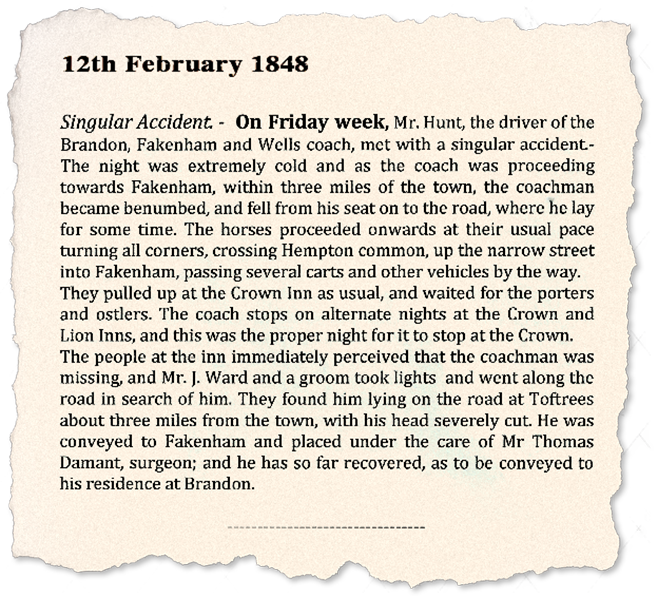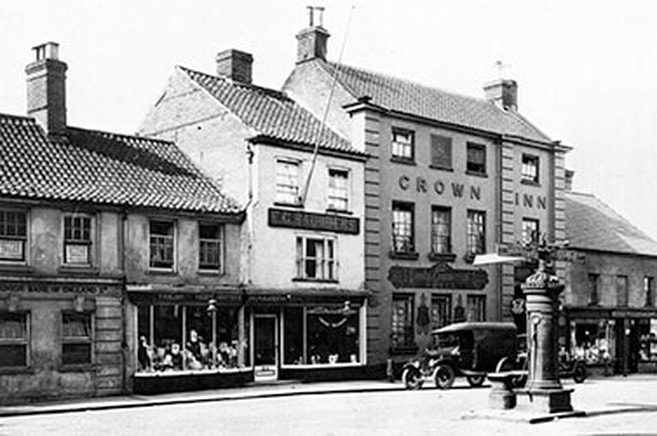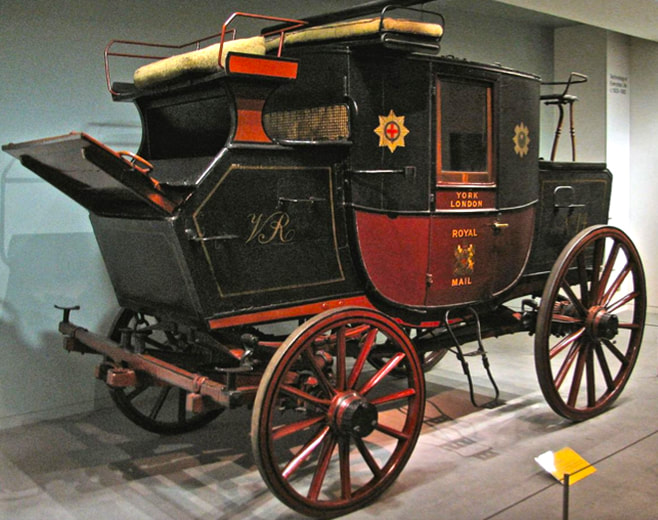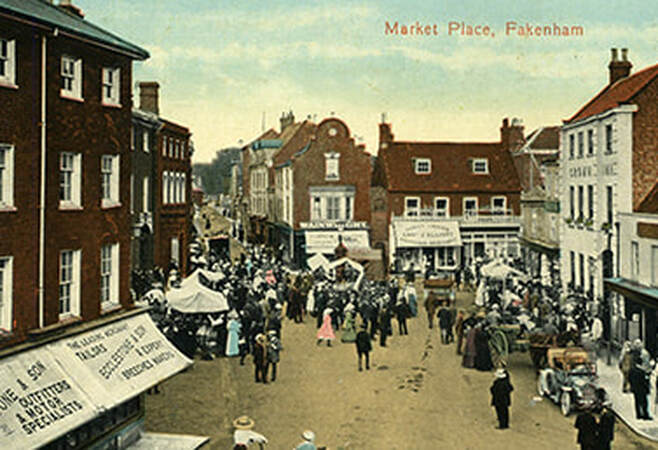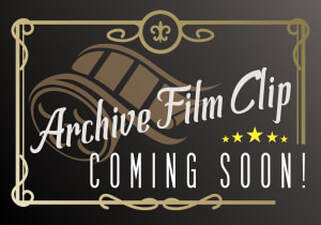02. THE CROWNThis coaching inn, founded in the Restoration period is thought to have been built on the site of a hunting lodge used by the Duke of Lancaster. Like other buildings, it was re-fronted in Georgian times. Coaches from London called here and it offered full residential services. In 1743 John Stewart of Castle Stewart, County Galloway was robbed of £285 (more than a hundred thousand today) whilst staying here. It turned out that his manservant was guilty and he eventually lost only two guineas.
The Crown was the regular stop for stage coaches to and from London and North Norfolk. The first known record dated 1791 advertised a coach from the Green Dragon Inn, Bishopsgate Street, London to the Black Lion Inn, Walsingham, leaving every Monday at six in the morning, reaching Fakenham on Tuesday evening with a second arriving on Saturday. The return journey from Walsingham started at six on Wednesday morning. The stage would have called at the Crown in both directions. Inside passengers paid one guinea with a baggage allowance of 20lbs (9 kilos). Outside passengers and children carried on the lap were charged half price. There is an extensive history of the coach services that called at the Crown over the next eighty years. In 1778 there was coach, known as a diligence, that ran between Norwich and Wells calling at the Crown on Mondays and Thursdays. Named coaches included the Prince of Orange, Norwich Post Coach, Resolution, Nelson, and Norfolk Hero. After 1842 the London coach from Fakenham ran only as far as Brandon where passengers joined trains on the new railway. There is an interesting account of one incident from a newspaper clipping below: The next Plaque is on The Bistro opposite the Crown. |
|
